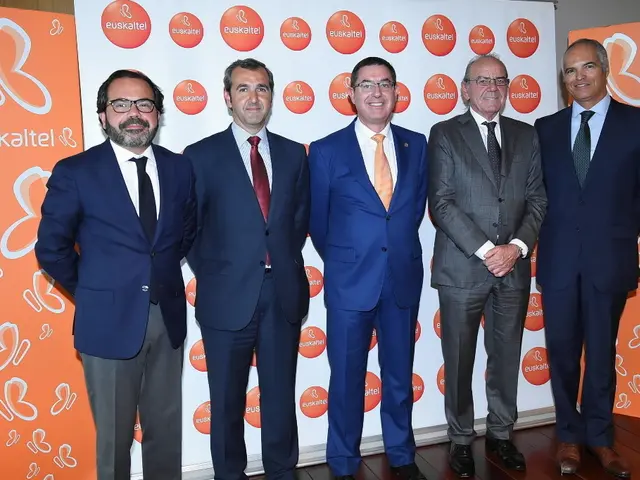Conducting an Experiment with Butterflies Using Static Electricity
In a captivating blend of science and creativity, the Static Electricity Butterfly Experiment offers an engaging way for children in kindergarten to 4th grade to explore the fascinating world of electricity. This experiment, which demonstrates the pull of attraction between opposite charges, is both educational and enjoyable.
The experiment begins with the creation of a negatively charged balloon. To achieve this, simply inflate a balloon, tie it, and rub it on a carpet or your hair. Once charged, the balloon generates an electric field around it, ready to exert its force on lightweight objects.
For this experiment, the wings of the butterfly are made from lightweight tissue paper. The body of the butterfly is crafted from cardstock paper and adorned with googly eyes and a mouth for a more lifelike appearance. The wings are attached to the body using a glue stick, and the butterfly is placed on a cardboard square or piece of cardboard for the experiment setup.
The key to the experiment lies in the interaction between the charged balloon and the tissue paper butterfly. When the charged balloon is held near the wings, the positively charged tissue paper wings are attracted to the negatively charged balloon, causing the wings to move or flutter without being touched. This motion mimics the flight of real butterfly wings and illustrates the principle that electric charges produce forces at a distance.
Extension activities for this experiment include experimenting with different materials, sizes of balloons, magnetism, and various static electricity activities. Additional resources, such as science books, worksheets, and supplies, are available to help introduce science to kids and students in a fun and interactive way.
In essence, the Static Electricity Butterfly Experiment provides a hands-on opportunity for children to learn about static electricity while creating a charming butterfly. It's a perfect way to spark curiosity about science and encourage a love for learning. So, gather your materials and get ready to experience the magic of static electricity!
- This Static Electricity Butterfly Experiment is ideal for kindergarten to 4th grade kids who are learning about stem education, as it offers a fun way to explore the principles of science.
- If your child found the Static Electricity Butterfly Experiment engaging, consider expanding their stem learning with other hands-on activities and experiments related to science and education-and-self-development.
- To create a more lifelike appearance, the body of the tissue paper butterfly can be adorned with art materials like googly eyes and a mouth.
- The experiment setup can be set on a cardboard square or piece of cardboard, providing a suitable platform for the butterfly's wings to flutter and move.
- Kids will enjoy online education resources such as printables and worksheets, which are helpful in understanding the concepts of static electricity better.
- In addition to the Static Electricity Butterfly Experiment, you can also explore the fascinating world of engineering by experimenting with different materials and sizes of balloons to see their impact on the electric field around the balloon.
- The interactive nature of this experiment not only educates children but also provides a platform for them to play and develop their critical thinking skills, making learning an enjoyable experience.
- By understanding the principles demonstrated in the Static Electricity Butterfly Experiment, kids can grasp the concept of magnetism, further broadening their knowledge of electrical charges.
- This experiment is the perfect introduction to stem education for young learners, allowing them to delve into the world of science and develop a lifelong love for learning.




